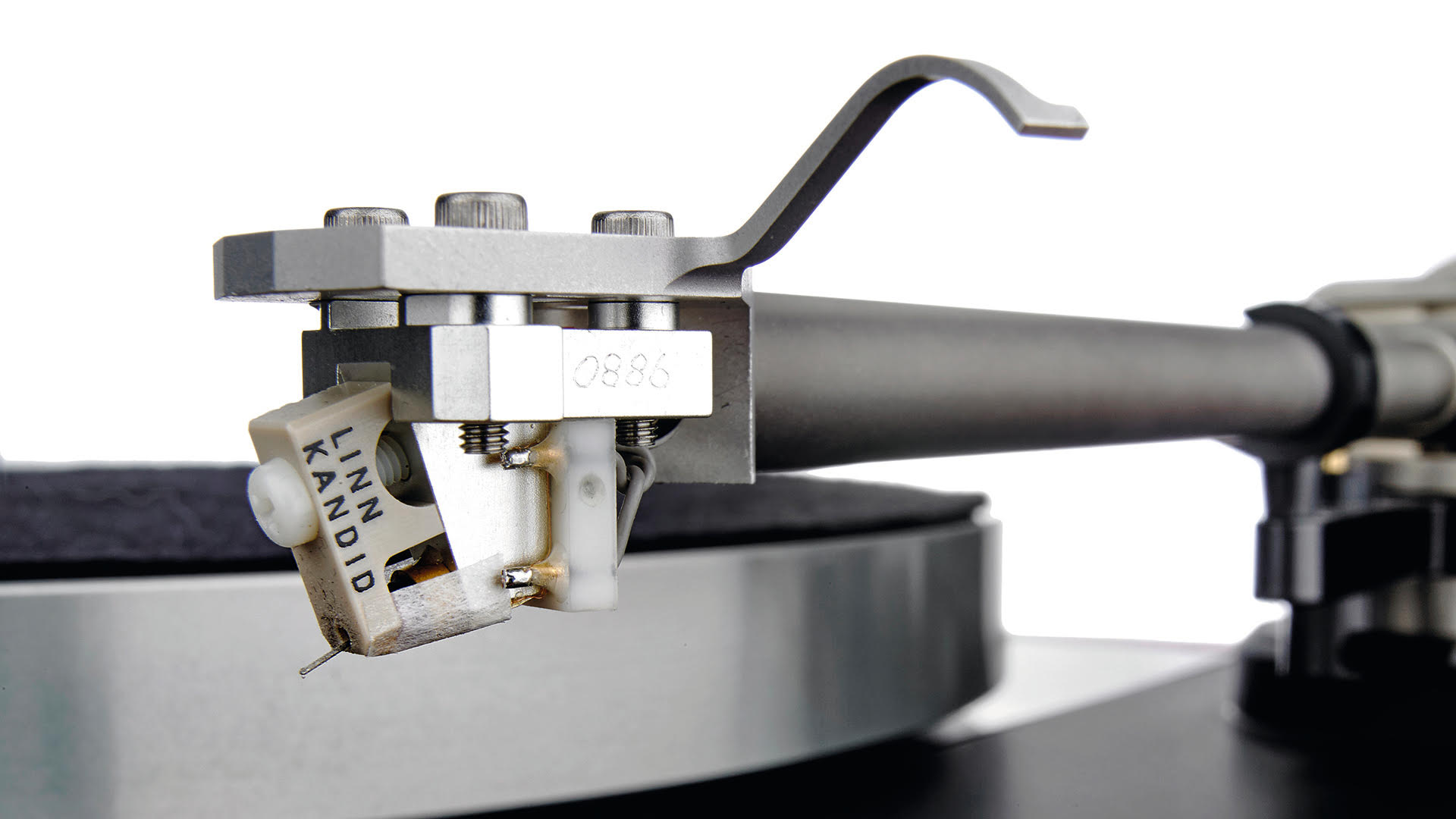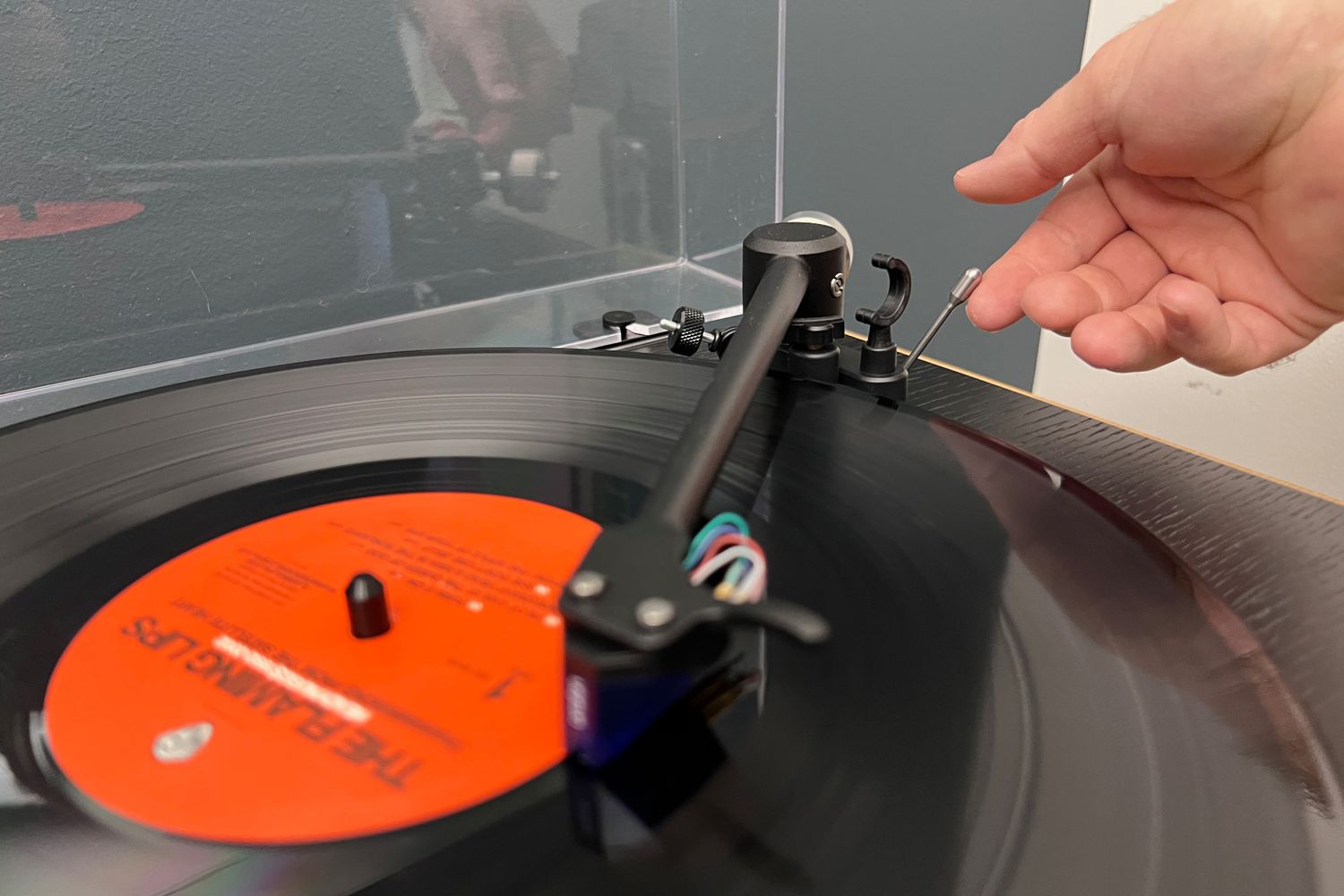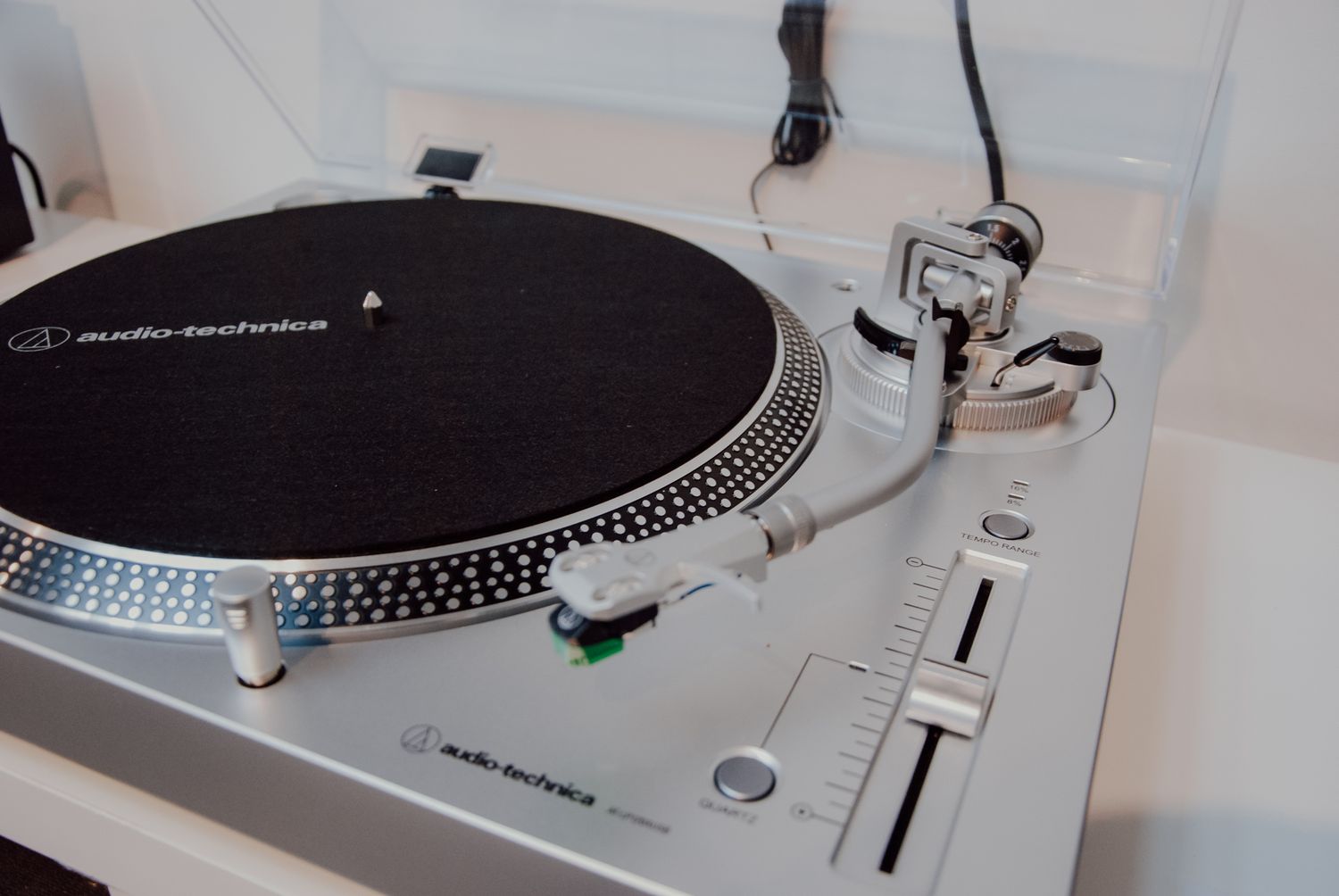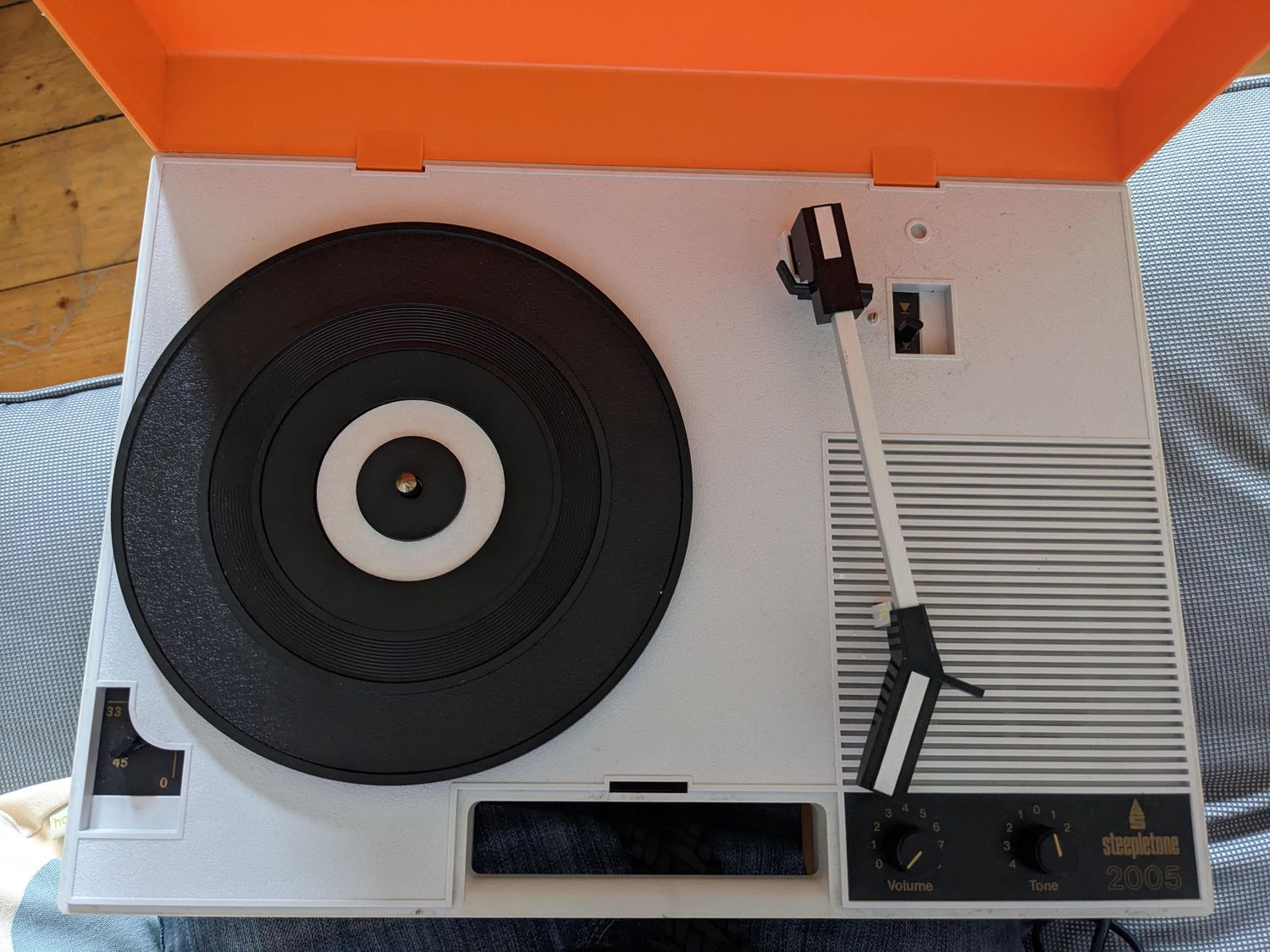Home>Devices & Equipment>Turntable>What Is Anti Skate On A Turntable


Turntable
What Is Anti Skate On A Turntable
Modified: January 22, 2024
Learn what anti-skate is on a turntable and how it improves your vinyl listening experience. Discover why it's an essential feature for any turntable setup.
(Many of the links in this article redirect to a specific reviewed product. Your purchase of these products through affiliate links helps to generate commission for AudioLover.com, at no extra cost. Learn more)
Table of Contents
Introduction
Welcome to the world of turntables, where music meets nostalgia. Vinyl records have experienced a resurgence in popularity in recent years, drawing both audiophiles and casual listeners back to the warm and rich sound that records produce. If you’re new to the world of turntables, you may come across some unfamiliar terms, such as “anti skate.” In this article, we will explore what anti skate is, its purpose, how it works, and the importance of proper adjustment.
When it comes to vinyl playback, achieving optimal sound quality is the ultimate goal. However, due to various mechanical factors, such as the tonearm’s movement across the record and the friction between the stylus and the groove, achieving perfect tracking can be challenging. This is where anti skate comes into play.
Anti skate, also known as anti-skating or anti-slip, is a feature found on most turntables. It is designed to counteract the forces that pull the tonearm towards the center of the record during playback. In simple terms, anti skate is a mechanism that helps maintain proper tracking and balance between the left and right stereo channels.
The primary purpose of anti skate is to ensure that the stylus stays centered in the groove of the record. Without anti skate, the stylus would be prone to varying degrees of tracking force imbalance, resulting in distortion and channel separation issues. By employing anti skate, the turntable effectively counteracts the inward force, allowing the stylus to glide smoothly and evenly along the grooves.
So how does anti skate work? Anti skate is typically controlled by a small adjustable knob or dial located on the turntable. This knob allows the user to apply a counteracting force that mimics the inward pull on the tonearm. By adjusting the anti skate, you can fine-tune the tracking force to ensure accurate and balanced playback of the audio signal.
Adjusting the anti skate properly is crucial for achieving optimal sound quality and to prevent tracking issues. If the anti skate is set too low, there will be insufficient force to counteract the inward pull, leading to mistracking and potentially damaging the stylus and records. On the other hand, if the anti skate is set too high, it can cause excessive outward force and affect the tracking ability, leading to distortion and sound imbalances.
Definition of Anti Skate
Anti skate, also known as anti-skating or anti-slip, is a mechanism found in turntables that counteracts the forces that pull the tonearm towards the center of the record during playback. It is an important feature that helps maintain proper tracking and balance between the left and right stereo channels.
When a vinyl record is played, the stylus, or needle, is placed on the record’s surface, and the tonearm is responsible for guiding the stylus along the record’s grooves. However, due to various mechanical factors, such as uneven groove depths or imperfections in the record, the stylus may experience an inward pull towards the center of the record.
Anti skate is designed to mitigate this inward force. It consists of a mechanism that applies an opposing force, pulling the tonearm slightly away from the center of the record. The goal is to achieve a balanced and consistent tracking force on both the left and right stereo channels, resulting in accurate and faithful playback of the audio signal.
The force exerted by anti skate is typically adjustable and can be controlled by a knob or dial on the turntable. By adjusting the anti skate, the user can fine-tune the force to match the specific characteristics of the tonearm and cartridge combination being used.
It’s worth noting that the term “anti skate” can be misleading, as it may imply a complete absence of inward force. In reality, the purpose of anti skate is not to eliminate the inward force completely, but rather to counteract it and create a balance. The force exerted by the anti skate is typically set to be slightly less than the inward force experienced by the stylus.
By properly adjusting the anti skate, the user can achieve optimal tracking performance, minimizing distortions, imbalances, and other tracking-related issues. It is an essential aspect of turntable setup and maintenance, ensuring that every precious note and detail of your vinyl records is faithfully reproduced.
Purpose of Anti Skate
The purpose of anti skate in turntables is to maintain proper tracking and balance between the left and right stereo channels during vinyl playback. It counteracts the forces that pull the tonearm towards the center of the record, ensuring accurate and faithful reproduction of the audio signal.
When a stylus is placed on a vinyl record, it experiences friction and resistance as it travels along the record’s grooves. This resistance can cause the stylus to be pulled inward towards the center of the record, leading to tracking issues and potential damage to the stylus and records.
Anti skate helps mitigate these issues by applying an opposing force that pulls the tonearm slightly away from the center of the record. This force counteracts the inward pull on the tonearm, allowing the stylus to track the grooves evenly and without distortion.
- Accurate Tracking: The primary purpose of anti skate is to ensure accurate tracking of the stylus along the grooves of the record. By maintaining a balanced force, anti skate helps prevent mistracking, skipping, and other playback issues.
- Channel Balance: Anti skate also plays a crucial role in achieving proper channel balance. If the inward force on the tonearm is not counteracted, the stylus may exert more pressure on one stereo channel compared to the other. This can result in imbalanced sound reproduction, affecting the stereo imaging and overall audio quality.
- Reduced Distortion: By effectively mitigating the inward force, anti skate helps reduce distortion and unnecessary wear on records and stylus. It allows the stylus to stay precisely aligned with the groove, minimizing distortion and preserving the fidelity of the audio signal.
- Prolonged Stylus Life: Properly adjusted anti skate also helps extend the life of the stylus. By ensuring accurate tracking and reducing excessive force on the stylus, it helps minimize wear and tear, prolonging the lifespan of your valuable record collection.
In summary, the purpose of anti skate is to maintain accurate tracking, balance the stereo channels, reduce distortion, and extend the lifespan of the stylus. By properly adjusting the anti skate, you can enhance the overall audio performance of your turntable and enjoy the full potential of your vinyl records.
How Anti Skate Works
Anti skate is a mechanism that works by applying an opposing force to counteract the inward pull of the tonearm during vinyl playback. This force is designed to keep the stylus tracking the record groove accurately and maintaining channel balance. While the specific design and implementation of anti skate may vary between turntables, the basic principle remains the same.
The force exerted by anti skate is typically adjustable and can be controlled using a knob or dial on the turntable. By adjusting this control, you can fine-tune the anti skate force to match the characteristics of your particular tonearm and cartridge combination.
The anti skate mechanism typically consists of a spring or a string connected to the tonearm. As the tonearm moves across the record, it experiences an inward force due to various factors such as groove depth, cartridge alignment, and stylus pressure. The anti skate mechanism applies an opposing force to the tonearm, pulling it slightly away from the center of the record.
This opposing force is achieved by adjusting the tension or angle of the spring or string. By doing so, it mimics the inward pull on the tonearm and helps maintain the proper tracking force on both the left and right channels. The goal is to create a balance between the inward force and the outward force exerted by the anti skate mechanism.
It’s important to note that the amount of anti skate force required varies depending on the specific turntable and cartridge setup. Factors such as the tonearm effective mass, cartridge compliance, and stylus shape all contribute to the ideal anti skate adjustment.
It’s recommended to refer to the turntable’s user manual or consult with a professional if you’re unsure about adjusting the anti skate correctly. Improper adjustment can lead to issues such as mistracking, unnecessary stylus and record wear, and degraded audio quality.
In summary, anti skate works by applying an opposing force to counteract the inward pull of the tonearm during vinyl playback. The adjustable mechanism helps maintain accurate tracking, channel balance, and minimize distortion. Proper adjustment ensures optimal performance and extends the lifespan of your turntable and records.
Adjusting Anti Skate
Adjusting the anti skate on your turntable is a critical step in achieving optimal sound quality and ensuring proper tracking of your vinyl records. Here’s a step-by-step guide on how to adjust the anti skate:
- Refer to your turntable’s user manual: The first step is to consult your turntable’s user manual to understand the specific instructions for adjusting the anti skate. Different turntables may have different methods or mechanisms for adjusting the anti skate, so it’s essential to follow the manufacturer’s guidelines.
- Locate the anti skate control: The anti skate control is typically a knob or dial located either on the turntable’s tonearm base or the turntable itself. It may be labeled as “anti skate” or “tracking force.” Find the control and identify how it can be adjusted.
- Start with a balanced setting: Begin by setting the anti skate control to a neutral or balanced position. This setting is usually indicated by a zero or a midpoint on the control. This starting position ensures that there is an equal amount of force pulling the tonearm towards the center of the record as there is pulling it away.
- Observe the tonearm movement: With the turntable running and a record spinning, carefully observe the movement of the tonearm across the record surface. Pay attention to any signs of mistracking, distortion, or imbalance between the stereo channels.
- Make small adjustments: If you notice any tracking issues, gradually make small adjustments to the anti skate control. If the sound leans towards one channel or mistracking occurs, incrementally increase the anti skate force. Conversely, if mistracking occurs in the opposite direction or the sound leans to the other channel, decrease the anti skate force.
- Listen and fine-tune: As you make adjustments to the anti skate, listen to the sound quality and pay attention to any changes in channel balance, distortion, or tracking performance. Fine-tune the anti skate control until you achieve a balanced, distortion-free sound with accurate tracking on both channels.
- Take note of the settings: Once you have successfully adjusted the anti skate, it’s a good idea to take note of the settings for future reference. This way, you can easily recreate the ideal anti skate settings if you need to make any changes or if you switch cartridges in the future.
Remember, proper adjustment of the anti skate is crucial for maintaining the integrity of your records and stylus. If you’re unsure about adjusting the anti skate or if you encounter difficulties during the process, it’s advisable to seek assistance from an expert or consult the manufacturer for further guidance.
By taking the time to adjust the anti skate correctly, you’ll be rewarded with enhanced sound quality, accurate tracking, and a more enjoyable vinyl listening experience.
Importance of Proper Anti Skate Adjustment
The proper adjustment of the anti skate on your turntable is vital for several reasons. It directly affects the sound quality, tracking performance, and longevity of your records and stylus. Let’s explore the importance of proper anti skate adjustment:
- Accurate Tracking: A correctly adjusted anti skate ensures that the stylus tracks the grooves of the record accurately. It prevents the stylus from being pulled inward or outward, minimizing the risk of mistracking, skipping, and distortion. This results in a cleaner, more faithful reproduction of the audio signal.
- Channel Balance: Proper anti skate adjustment helps maintain channel balance. Without it, the inward force on the tonearm can cause the stylus to put more pressure on one stereo channel than the other. This imbalance can lead to audio distortion, affecting the stereo imaging and overall listening experience.
- Reduced Wear and Tear: When the anti skate is set correctly, the forces on the stylus and the record are balanced. This balanced force minimizes unnecessary wear on both the stylus and the record grooves. By reducing the risk of excessive force, proper anti skate adjustment helps extend the lifespan of your valuable records and stylus.
- Minimized Distortion: Inaccurate anti skate adjustment can introduce distortion into the audio playback. This can manifest as audible artifacts, such as sibilance, inner groove distortion, or exaggerated highs and lows. By properly adjusting the anti skate, you can minimize these distortions and achieve a more natural and enjoyable sound reproduction.
- Protecting Your Investment: Vinyl records hold both monetary and sentimental value to collectors and enthusiasts. By ensuring proper anti skate adjustment, you safeguard your investment in these prized possessions. Correct tracking reduces the risk of groove damage and stylus wear, preserving the quality and longevity of your record collection.
It’s important to note that the optimal anti skate adjustment can vary depending on various factors, such as the cartridge type, the tonearm effective mass, and the stylus shape. Experimentation and fine-tuning may be necessary to find the perfect balance for your specific setup.
Whether you’re an audiophile seeking the highest fidelity or a casual listener looking to enjoy your vinyl collection, taking the time to adjust the anti skate properly is essential. It ensures accurate tracking, channel balance, reduced wear and tear, minimized distortion, and protection for your records and stylus. With a well-adjusted anti skate, you can fully enjoy the warmth and richness of vinyl playback, recreating the immersive experience that vinyl enthusiasts cherish.
Potential Issues with Anti Skate
While anti skate is a crucial feature in turntables, there are a few potential issues that can arise with its implementation or adjustment. Understanding these issues can help you troubleshoot and address any problems that may occur:
- Overcompensation or Undercompensation: Improper adjustment of the anti skate can lead to overcompensation or undercompensation of the inward force on the tonearm. Overcompensation occurs when the anti skate force is set too high, causing excessive outward force on the tonearm. This can lead to mistracking, distortion, and unnecessary wear on the stylus and records. Undercompensation, on the other hand, occurs when the anti skate force is set too low. This can result in an unbalanced force, causing the stylus to pull towards the center of the record and potentially damaging the stylus and records.
- Tracking Issues: If the anti skate is not properly adjusted, tracking issues may arise. Mistracking or skipping can occur, where the stylus fails to maintain consistent contact with the record groove. This can result in poor sound quality, skipped sections of the music, and potential damage to the stylus and records. Incorrect anti skate adjustment can also cause inner groove distortion, where the stylus struggles to accurately track the innermost grooves of the record.
- Channel Imbalance: One common problem associated with anti skate is channel imbalance. This occurs when the anti skate force is not properly adjusted, resulting in an uneven pressure on the left and right stereo channels. Channel imbalance can lead to imprecise stereo imaging, where one channel may sound louder or more pronounced compared to the other. It can also cause the music to be off-center and can be distracting and disruptive to the listening experience.
- Lack of Documentation: Some turntables may lack comprehensive documentation or clear instructions on how to adjust the anti skate. This can make it challenging for users to properly set the anti skate force. In such cases, it’s recommended to consult with the turntable manufacturer or reach out to knowledgeable audio enthusiasts who can provide guidance based on their experience.
To address these potential issues, it’s important to familiarize yourself with your turntable’s user manual and specific anti skate adjustment instructions. Take the time to experiment and fine-tune the anti skate force to find the optimal setting for your setup. If you encounter difficulties or are unsure about proper adjustment, consult with a turntable technician or audio specialist who can provide expert guidance.
By being aware of these potential issues and taking the necessary steps to address them, you can ensure that your anti skate is properly adjusted, resulting in accurate tracking, balanced channel output, and a high-quality vinyl listening experience.
Conclusion
The proper understanding and adjustment of the anti skate feature on your turntable are crucial for achieving optimal sound quality, accurate tracking, and preserving the lifespan of your records and stylus. By counteracting the inward forces that pull the tonearm towards the center of the record, anti skate helps maintain channel balance and minimize distortion.
Adjusting the anti skate requires careful attention and experimentation. Starting with a balanced setting and making small adjustments while observing the tracking performance and sound quality can lead to a well-adjusted anti skate. It is important to consult your turntable’s user manual or seek professional assistance if you are unsure about the proper adjustment procedure.
A well-adjusted anti skate ensures accurate tracking, balanced channel output, reduced wear and tear on records and stylus, and an enjoyable vinyl listening experience. It allows you to fully embrace the warmth and richness of vinyl playback, recreating the immersive experience embraced by audiophiles and casual listeners alike. Remember, each turntable and cartridge combination may require slightly different anti skate settings, so keep experimenting and fine-tuning to find the perfect balance for your setup.
Overall, the proper adjustment of the anti skate is an essential aspect of turntable setup and maintenance. By taking the time to understand and adjust this feature correctly, you can enhance your vinyl listening experience and ensure the longevity of your precious record collection.











